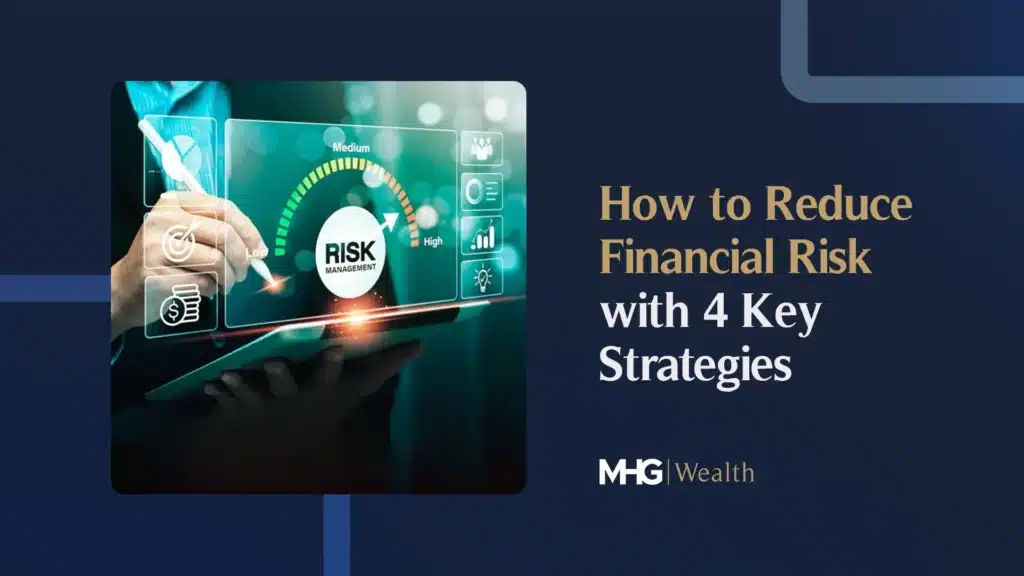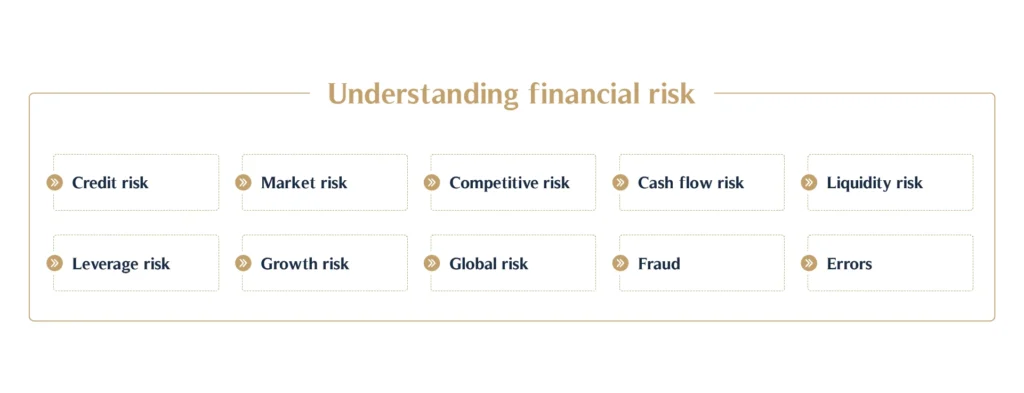In the business world, financial risk is unavoidable. There is always the chance you may lose money on a business venture, or investment. However, there are steps you can take to lessen any impact, should something go wrong.
Financial risk management is an essential way to improve your odds of succeeding. In this guide, we’ll explain financial risk in detail and look at risk management strategies that will show how to reduce financial risk in business.
Key takeaways
- Financial risk is unavoidable
- Businesses can reduce financial risk with tried and tested risk management strategies
- There are four main risk management strategies
Understanding financial risk
Simply put, financial risk is the likelihood that you may lose money on a business or investment decision. Financial risks can result in capital loss for individuals and businesses.
There are many types of financial risks, and their importance depends on the size of the business and the industry. However, these are the main types.
Credit risk
Extending credit introduces a potential for uncollected sales, because when customers or clients don’t pay up, your business loses revenue and costs are unrecouped.
Market risk
Unpredictable external forces relating to your industry, such as advances in technology and customer preferences. For example, the changes over the years in the music industry – from vinyl to streaming platforms.
Competitive risk
How other companies perform in your particular industry creates competitive risk. This could be through changes in pricing or product features by existing competitors, or totally new rivals.
Cash flow risk
The imbalance between inflow and outflow. For example, if you extend 60 days of credit to your customers, but you’re subject to 30-day payment terms from your suppliers, you’re in trouble.
Liquidity risk
Linked to cash flow, your liquidity risk is your ability to pay your way with short-term assets. If you can ensure your cash flow is good enough to make timely payments, your liquidity risk will be low.
Leverage risk
The amount of borrowed capital that your business uses for finance and investments is prone to external extra costs, such as increased interest rates or lower-than-expected returns.
Growth risk
This risk may come as a surprise, but the growth of your business can create the potential for problems, such as liquidity issues caused by the overextension of capital to invest in your expansion.
Global risk
Government policy changes, social unrest, pandemics, exchange rates… no matter how hard you safeguard, global risks can happen unexpectedly at any time.
Fraud
Theft or embezzlement, whether internally or externally, can cause direct loss in your finances, and can raise other risks, such as damage to your reputation.
Errors
Accurate data is essential to modern business leaders when making decisions, and it also helps monitor risks.
There is a positive correlation between risk and return in financial performance – but not always. Yes, it is the case that the greater the risk, the higher the potential for profit. However, the higher the risk also means the potential for greater financial loss.
So when it comes to business, you need to understand your risk tolerance, and work with experts to develop risk management strategies. Financial risk management means being able to proactively detect, analyse and mitigate present and potential risks that could affect you and your business.
Risk management strategies
There are four main financial risk management strategies.
- Risk acceptance – you acknowledge potential harm from risk, but choose not to act on it.
- Risk transference – you decide to shift risk management to a third party.
- Risk avoidance – you take steps to eliminate risk.
- Risk reduction – you implement controls to decrease risk.
Risk acceptance
One of the most popular risk management strategies. The cost of mitigating a risk outweighs the cost of that risk happening – or the chance of an incident happening is low
Risk transference
There are a number of risk mitigation strategies that involve transferring risk to a third party. For example, you might choose to outsource services that aren’t core capabilities.
Risk avoidance
You eliminate certain chances of risk, such as ceasing to work with a supplier that keeps failing to meet delivery deadlines. Or, if certain clients keep paying you late.
Risk reduction
Lessen the chance of risk, or the impact of risk occurring, by implementing risk reduction measures such as training for staff, monitoring systems and compliance through employing technology.
Examples of risk management strategies
Although many businesses use these strategies, things can still go wrong. For example, in 2010, BP made headlines after an oil spill in the Gulf of Mexico. The oil giant had accepted risk by using substandard equipment that violated its safety policies, because delays had cost the company millions. However, by accepting that risk, 11 people lost their lives, the Deepwater oil spill became the largest in history, and BP lost billions.
Thankfully, this extreme case is unusual. There are plenty of success stories, too. For example, Marriott International is one of many hotel chains that use risk transference through comprehensive insurance coverage, which reduces the risk of financial impact caused by potential accidents or even natural disasters.
The bank HSBC avoided risk when facing huge fines for not complying with anti-money laundering regulations. They did this by adopting strict internal controls.
So we can see that the world’s biggest businesses are well versed in using risk management strategies, and that plays a large part in their success. The case of BP proves that however much you plan, there is always risk to consider.
However, proactive financial risk management with a team of experts reduces that risk as much as possible. Proactive risk management will help you to identify and address risks before they can happen. Expert risk managers examine risk trends and patterns based on their data, to measure and manage emerging risk. You and your business will be able to:
- Manage risks in a way that can generate greater value
- Provide actionable insights
- Turn risk into a potential advantage
Want to implement strategies to improve your financial risk control? Contact MHG Wealth Management today and improve your financial planning immeasurably.






